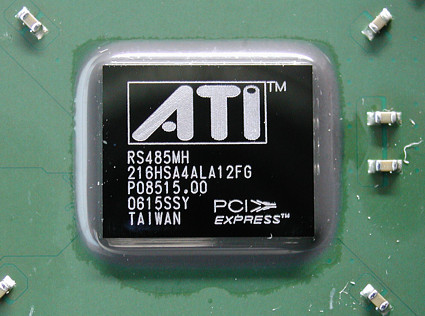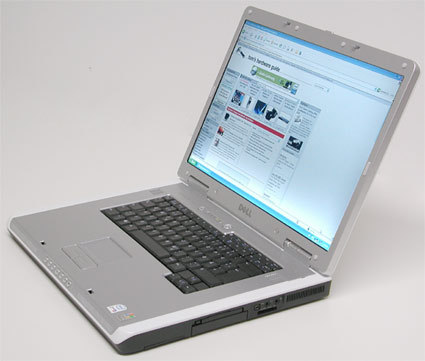AMD's Dual Core Laptops Have Arrived: Introducing the Turion 64 X2
Test Systems From MSI And HP, Continued
We do not need to go into too much detail about the Compaq nx6325, as we will discuss it shortly in a separate article. But we'll provide you with just one interesting fact: the laptop is the legitimate successor to the Compaq nx6125, which we consider to be the best business laptop based on the "old" single-core Turion 64.
... but with the new Mobility Radeon X1150 chipset, which has a higher clock rate (image shows the Northbridge)
Similar to the old model, it has a first-rate case and diverse security functions, such as a fingerprint sensor and a Trusted Platform Module. The display of the nx6325 is still matte, as on the predecessor. Depending on the model, the display provides XGA or SXGA+ resolution (as in our model, the EY351ET). With a 54 Wh standard battery, it weighs approximately 6.2 lbs.
As you would expect, we used the MSI S270 and the HP Compaq nx6125 as AMD Turion 64 reference systems, both equipped with the single-core AMD Turion 64 and the graphics subsystem Mobility Radeon X300, which is integrated in the chipset.
Various laptops models from LG Electronics, Dell, and Asus provided figures for the Intel faction, i.e., the single and dual core processors Pentium M 7xy and Core Duo T2xyz. The LG LW60 is considered to be one of the fastest Pentium M laptops in the market. Asus A6000 delivered CPU performance values for the Core Duo T2500. We determined pure CPU performance on the basis of these laptop models. Asus W5F provided the system performance values with Sysmark 2004 SE.
Dell Inspiron 9400 17" model with Core Duo T2400 and integrated graphics (950GMA)
We opted for the Dell Inspiron 9400 to compare the battery life of the opponents Intel Core Duo T2400 and AMD Turion 64 MT-37/AMD Turion 64 X2 TL-60. As the graphics core is integrated in the chipset, this laptop is especially suitable for comparing the power consumption of the Intel and AMD platforms, as the result is not affected by power-hungry dedicated graphics chips.
Get Tom's Hardware's best news and in-depth reviews, straight to your inbox.
Current page: Test Systems From MSI And HP, Continued
Prev Page Test Systems From MSI And HP Next Page Benchmarks And Settings
